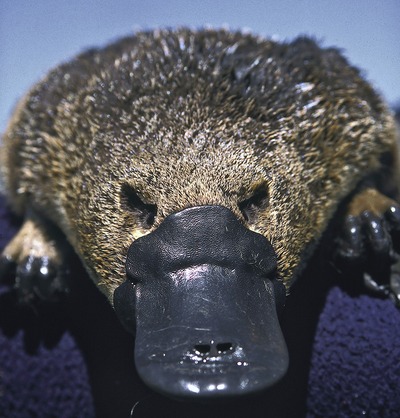Genetic safety in numbers, platypus study finds
Platypuses on the Australian mainland and in Tasmania are fighting fit but those on small islands are at high risk of being wiped out from disease, according to a University of Sydney study.

The finding has important implications, not only for the management of the platypus but for other populations with limited genetic variation, including the iconic koala.
“We have identified platypus populations which are at high risk of disease epidemics due to low genetic diversity,” said Mette Lillie, a PhD researcher at the University of Sydney’s Faculty of Veterinary Science.
Lillie is the lead author of the study on platypus populations, Diversity at the Major Histocompatibility Complex Class II in the Platypus, Ornithorhynchus anatinus, published this month in the Journal of Heredity Advance Access. Lillie’s supervisor Kathy Belov, Associate Professor in Animal Genetics, is the study’s senior author.
The platypus has a wide distribution in Australia, including island populations on Tasmania, King Island (north-west of Tasmania) and Kangaroo Island (south-west of Adelaide).
“Our study measured how immunologically fit platypus populations are based on how much variation there is in their immune genes. Variation is very important for populations because the more variation there is, the more pathogens the populations can resist,” Lillie said.
The study found platypus colonies on the mainland and in Tasmania show high immune gene diversity. The smaller island platypus populations were a different story. The Kangaroo Island population had very low diversity and the King Island population had no immune gene diversity at all.
The lack of diversity in the Kangaroo Island population can be explained by the fact that only a small number of platypuses were introduced there during the 1930s and ‘40s, which would have limited genetic diversity.
The King Island population has been isolated from Tasmania and the mainland since the last ice age, 14,000 years ago, so genetic diversity would have been lost due to inbreeding and random genetic drift - an important evolutionary force that influences genetic diversity from one generation to the next. Genetic drift is especially significant in small isolated populations, where it tends to decay genetic diversity over time.
The team has previously shown that low immune gene diversity allowed a contagious cancer to decimate Tasmanian devils, so the identification of a shallow gene pool in Kangaroo and King Island platypuses raises concerns about their long term survival. These populations will need to be carefully managed and monitored for signs of disease outbreaks, as an introduced disease could reach epidemic proportions.
This research has important implications for conservation management as it reinforces the idea that healthy populations need high levels of immune gene diversity. Large populations of immunological clones are a recipe for disaster and time bombs for disease epidemics.
Colon cancer DNA in blood can guide chemo decisions
A simple blood test could change how doctors decide which patients with colon cancer need...
Non-invasive blood test helps rule out oesophageal cancer
Designed and developed in Australia, the PromarkerEso test is designed to offer a quick,...
Taste-based flu test enables rapid diagnosis
The diagnostic tool consists of the sensor molecule thymol and a virus-specific sugar building...



